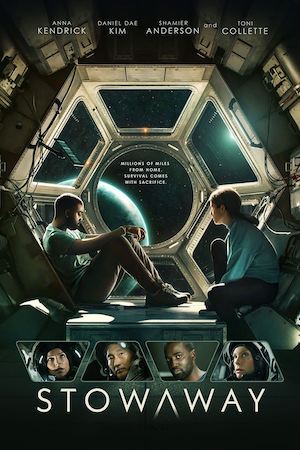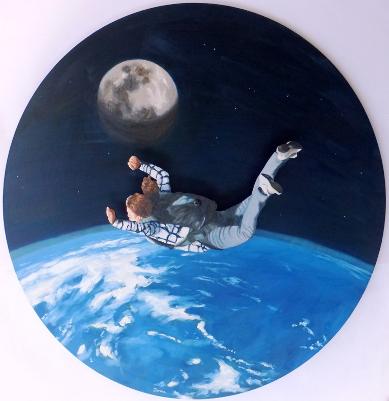Dr Michael R Wagenman is Senior Research Fellow, Director of the Scripture Collective, and Director of Postgraduate Studies at the Kirby Laing Centre for Public Theology.
Anyone who hangs around me long enough will eventually hear me congratulate a film for being “redemptive.” This often brings a puzzled look to the faces of my friends. They thought the film was “entertaining” or “inspiring” or “informative” or “provocative.” They want to know why I am so insistent that even the darkest or most violent of films strike me as “redemptive.”
What makes any art “redemptive”? There’s that famous quotation which one routinely finds on social media attributed to Martin Luther:
The maid who sweeps her kitchen is doing the will of God just as much as the monk who prays – not because she may sing a Christian hymn as she sweeps but because God loves clean floors. The Christian shoemaker does his Christian duty not by putting little crosses on the shoes, but by making good shoes, because God is interested in good craftsmanship.
While many may agree with the sentiment expressed here, Frederick Gaiser has searched extensively through Luther’s works and cannot find it anywhere. He did discover, though, that this quotation makes its first appearance in a devotional published in 1994 and distributed widely.1
Nonetheless, the idea has merit: art is not necessarily redemptive just because it is explicitly religious, evangelistic, or devoted to God. That may make it woodenly religious in sentiment but bordering on propaganda rather than art.

I recently found a new film on Netflix to be a great example of art that is redemptive. Stowaway (2021), written and directed by Joe Penna and starring Anna Kendrick, is the story of a mission to Mars that quickly turns into an ethical dilemma of the most urgent kind.
Within hours of launch but too far beyond Earth to return, the three-person crew discovers an accidental “stowaway.” Now the dramatic tension enters the narrative, propelling the film’s narrative of how very different personalities might work together to address the unexpected.
In the challenging environment of space travel, the crew’s options quickly become anxiously limited. Will they choose faithfulness to the mission, self-preservation, care for the other, or solidarity? Each subsequent scene explores one option after another with mathematical rigour. Each crew member’s unique point of view emerges until a heated battle of wills occupies centre stage, with death looming closer and closer for them all.
This becomes the ground from which each character’s inner contradictions begin to grow. The scientist verges towards the irrational. The commander of the crew is tempted with abdicating responsibility. The doctor’s Hippocratic commitment entertains death as a means to achieve life.
In an evocative flashback, one crew member recalls a childhood that contains an episode that parallels their mid-flight conflict. But it turns out to not be a conflict of wills but the inner conflict of one’s own contradictory impulses: safety and security versus dangerous courage. The flashback contains the lesson – both then and now: unexpected strength often lies just beyond one’s fears. Maybe now, with logic revealing a certain death, there is something possible that lies just on the other side of what appears impossible. Courage is required, though, because all one can perceive at the moment is what reason alone defines as the real.
Here the dramatic – and even theological – centre of the film comes into view: is the dilemma the scientific challenges of space travel, the perspectival differences of working as a team, or the deeply personal battle within each of us to will courage rather than succumb to reason’s facts? But what if the leap of faith ends in despair? What if the journey into the unknown, even propelled with courage, results in tragedy? What if life is pursued but death is the result? It is this juxtaposition, at the most fundamental level of human life, that gives the film’s closing scenes its beauty within a grand and mysterious creation.
The reformational Dutch theologian, Hans Rookmaker, wrote in the introduction to his 1978 work, Art Needs No Justification, that “There is a contribution to be made to an age that is often anti-Christian in the most outspoken way.” In films that I judge to be redemptive, I am often perceiving an artistic embodiment (routinely quite subtle and subversive) of the Bible’s overall creation, fall, redemption narrative. Despite the “anti-Christian” forces within every society, there are always contributions that this redemption story can make. It is the role of the Christian to perceive and discern these contributions where they might be possible at any given time. This is the courage of faith: to offer these redemptive contributions trusting that they can be filled with meaning by the one Creator God who has made all things beautiful.
Stowaway displays the beauty of creation: a grand universe, human beings exercising intelligence and wisdom and love, and a commitment to exploring the many potentials God has woven into creation. But the film also knows what the fall means: the ever-present-ness of death, the human attempt to overreach our creational boundaries, and selfish commitments to personal safety instead of care for the neighbour. And yet there is a story of redemption that the eyes of faith can perceive even in the most extreme limits of human life: the open imagination that perceives more than the “facts,” a willingness to risk and adventure into the unknown, and self-sacrifice for the life of the other.
So much of our global culture today is fixated on the security of one’s self, position, ideology, or tribe. We have run the numbers; we have gathered the facts; all that remains is to make the calculation regardless of the human beings involved. It’s the widespread disregard for human life and well-being in the service and worship of Mammon. In this kind of a world, a world still suffused with beauty because it is God’s good creation, films like Stowaway are redemptive forms of art that whisper to us that there’s another way to be human. This is their artistic contribution in a world always in need of redemption stories.

The Kirby Laing Centre for Public Theology in Cambridge. Charity registered in England and Wales. Charity Number: 1191741
Kirby Laing Centre, The New Mill House, Unit 1, Chesterton Mill, French’s Road, Cambridge, CB4 3NP
© 2022 The Kirby Laing Centre for Public Theology in Cambridge